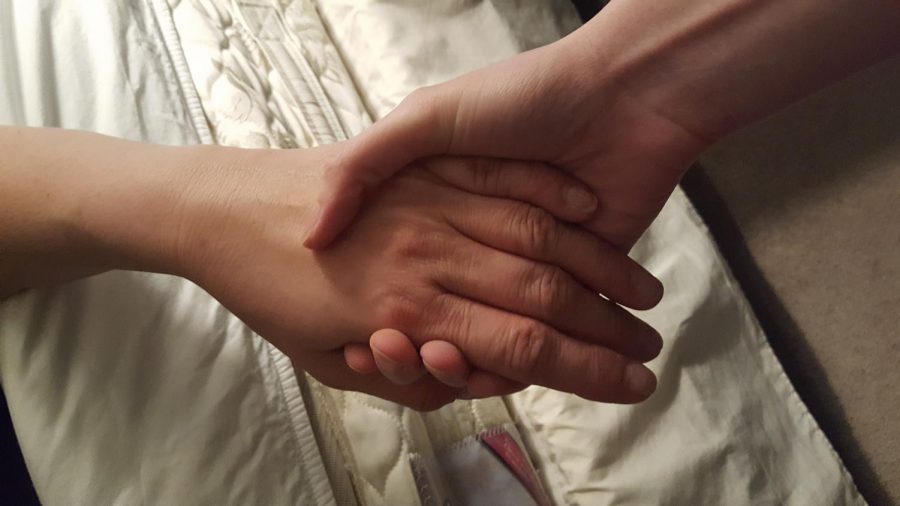Euthanasia In America
Most of us don’t like to think about death; it can even be perceived as taboo to talk about it. But everyone dies eventually, and, like their lives, most people want to have control over their deaths. This obviously doesn’t apply in cases of instant or near-instant death. However, some people die slowly, afflicted by some horrible injury or illness. In these cases, the person may be in so much constant pain that they want to end it all. Yet, in most countries, they cannot end their suffering, because euthanasia is illegal. So they must wait, life support or palliative care prolonging their life, dragging out the inevitable.
There are varying, complex definitions regarding euthanasia. A basic definition of euthanasia, according to Medical News Today, is when a “doctor is allowed by law to end a person’s life by a painless means, as long as the patient and their family agree.” Euthanasia can either be voluntary or non-voluntary. Medical News Today distinguishes that voluntary euthanasia is when “euthanasia is conducted with consent” and non-voluntary euthanasia is when “euthanasia is conducted on a person who is unable to consent due to their current health condition. In this scenario the decision is made by another appropriate person, on behalf of the patient, based on their quality of life and suffering.” Euthanasia can either be passive or active. Passive euthanasia is when a doctor withholds life-sustaining treatments, and active euthanasia is when someone uses a lethal substance or force to end the patient’s life. All of this must be done with the patient’s consent, or in the case of non-voluntary euthanasia, the appropriate person on behalf of the patient.
Voluntary euthanasia is legal in Belgium, Luxembourg, The Netherlands, Switzerland, and the U.S. states of Oregon and Washington. Why is euthanasia illegal in most countries if its purpose is ending the suffering of a dying individual? Unfortunately, it’s not as simple as just making it legal to end a person’s suffering. There are plenty of pros and cons regarding the legalization of euthanasia, the most notable of which include the pros of freedom of choice and humanely ending suffering, and the cons of religious or moral arguments and determining whether the patient is competent enough to fully understand the implications of euthanasia. Former hospice nurse Lori Bearg, who lives in Arizona, says, “We have something in Arizona called terminal sedation. It’s a very serious matter, and in 14 years I’ve only seen it done probably three times. And that’s when we’re able to give enough medication for symptoms to speed the process of death, but it also took a couple of doctors and it took with, with all of these patients, days of treating them in an impatient unit with symptoms that couldn’t be managed. Pain that no matter what we gave them, they were screaming in pain. And it was horrible. I mean, these were my patients or a patient that had terminal restlessness so bad, where they’re trying to jump out windows and crawl the walls and beg you to kill them because of this, this horrible restlessness inside of them, and we couldn’t control it with medication. I mean it was, it was horrible. So, it took an act of God, to be able to medicate them enough to make them comfortable. And [people] worry about the legality of that because I mean we were giving them enough meds, that it should stop anybody’s breathing, but since it’s not legal here, these people truly have to suffer.”
Euthanasia exists to prevent these patients from dying horrible deaths in horrendous pain that medication can’t handle. Yet, there is still opposition. Some are afraid of the legality and difficulty of regulating euthanasia. Involuntary euthanasia, when euthanasia is performed on someone who could’ve given informed consent, but didn’t, is one of the aspects that would have to be heavily regulated. Involuntary euthanasia is essentially murder, so it’s understandable that people would want to avoid legalizing euthanasia in order to avoid murder. However, as long as there are very strict rules and multiple witnesses confirming the patient’s wishes, involuntary euthanasia shouldn’t be a problem. Another concern is how to determine if the patient desires to die to escape their physical pain only. Mental illness and guilt from using medical resources are not accepted reasons for euthanasia; only debilitating, life-threatening conditions warrant it. This is a very slippery slope to navigate. No one ever truly knows what another person is thinking or feeling, so it would be difficult to recognize when a patient genuinely cannot live anymore due to their physical pain.
But there is a partial solution to this issue. If everyone fills out a living will, or advanced directive, it would reduce the confusion and difficulty in making the decision. An advanced directive is “a legal document of health care instructions,” according to Oregon State Bar. “You can use this document to appoint someone called a health care representative to make health care decisions for you when you are unable to make your own health care decisions.” Your instructions may involve “a directive to physicians to withhold or withdraw life-sustaining procedures under certain circumstances.” These circumstances, which must be verified by two physicians (one must be yours), include: “you are close to death and life support would only postpone, not prevent death; or you are permanently unconscious; or you have an advanced progressive illness; or life support would not help your medical condition and would subject you to extraordinary suffering.” Filling out an advanced directive with instructions for how you want to die would make the entire process much less complicated for everyone involved. It would prevent the confusion of whether you are lucid enough to make this decision, and the rules regarding the “certain circumstances” would prevent patients from being euthanized unnecessarily.
Ultimately, the decision to be euthanized is up to the individual and their level of suffering. It would not be forced upon anyone; it would just be an option, should someone need it. Whether someone is dying from cancer or is in a coma, the decision to end their prolonged suffering is a valid one. As Lori Bearg puts it, “If today I was, say I wasn’t terminal but I was in massive pain all the time and it wasn’t treatable, why wouldn’t I have a right to end my life? Why does the government get to say that that’s their decision?” After all, there are only two things that are certain in life: birth and death. We cannot control how we are born, so we should have the right to control how we die.










